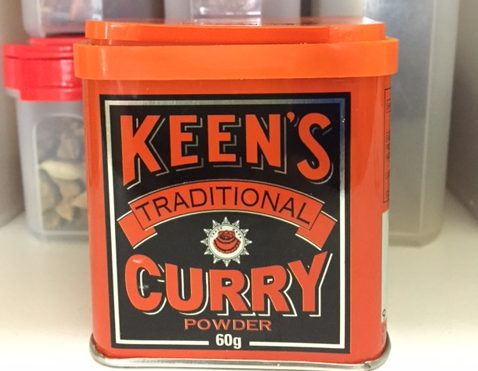This was going to be a post about eggs, but I got distracted by curry.
It happened like this. When you start fossicking around newspapers in Trove for egg recipes, curried eggs feature pretty heavily, right back to the late nineteenth century. While my experience of curried egg mainly involves sandwich fillings, these recipes largely involve a curry sauce sauce coating sliced hardboiled eggs.
In fact if you believe newspaper recipes from the first half of last century, Australians were willing to curry just about anything: rabbit, beef, lamb, tongue, tripe, cheese, macaroni, sardines, celery, oysters and even peaches get the curry treatment. (Let’s remember a good, strong curry sauce could spice up the glut ingredient you’d already eaten in every other possible form over months, and disguise meat on the turn.)
Curry’s early popularity in Australia makes perfect sense, given the spread of the British Empire diaspora. According to Kate Colquhoun’s Taste, Hannah Glasse published a recipe for ‘Currey the India Way’ in her 1747 English cookbook, and from there on curry flavours became more and more popular through Regency and Victorian times.
In spite of the occasional recipe that seems more authentic to our modern understanding (like this 1911 one with red lentils – basically a dhal), early 20th century curry often involved sweet ingredients like sultanas (why oh why?), banana, or apple. Some recipes even included jam. That’s the sort of curry we children of the 1970s recognise.
Keen’s curry
Although it’s part of a wider Empire tradition, Australia’s curry tradition is also distinctive. The curry powder we had in our 1970s cupboard was always Keen’s, originally a Tasmanian brand. After migrating from England in 1842, Joseph Keen ran a bakery, grocery and postmaster near Hobart. He and his wife, Annie Burrows manufactured their own sauces and spice mixes, including their prize-winning curry powder.

We all usually had Keen’s mustard too. But did you know that these two products had completely unrelated histories until the 1950s? Keen’s mustard dates back to 1740s England. Reckitt & Colman, who made Keen’s mustard in Australia, bought the formula rights to Keen’s curry in 1954, and they’ve both been owned by McCormick Food since 1998.
A curry recipe
Of course now we’d be more likely to roast and grind our own spices for a curry, or buy a paste. And we’d first check if it’s a Thai curry or Indian, Sri Lankan or Malaysian. The days of curry just being curry are long gone.
Unless we’re talking curried eggs. You don’t really need a recipe, but here’s how I do mine. Like many foods of childhood, people have mixed feelings about curried egg, but in my view you can’t beat a classic.
You need some mayo to stick things together, but not so much that you overpower the flavour. On the other hand, you need a solid hit of curry or else what’s the point?
Curried egg sandwiches
Serves 2.
- 4 slices of bread, buttered
- 3 eggs
- 1 tsp mayonnaise
- pinch salt
- 1/4 to 1/2 a teaspoon of curry powder of your choice (to taste)
- a few chives, snipped
- lettuce
Hard boil the eggs. When cooled, peel and mash the eggs. Add mayonnaise, curry powder, chives and salt, stir well. Butter the bread, and layer egg evenly then add lettuce. Sit back and relive your childhood.

Leave a comment